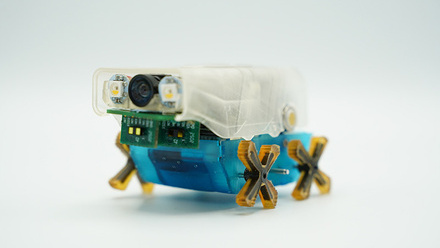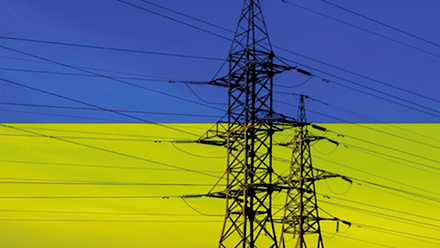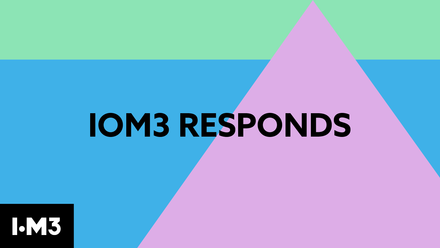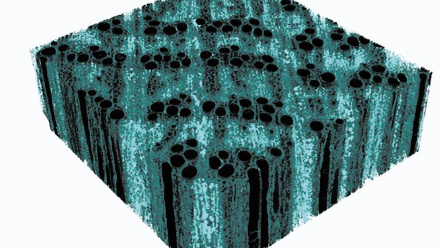Sprayable gel to shield buildings from wildfires for longer
A sprayable gel reportedly shields buildings from wildfire damage and lasts longer, claim scientists at Stanford University, USA.
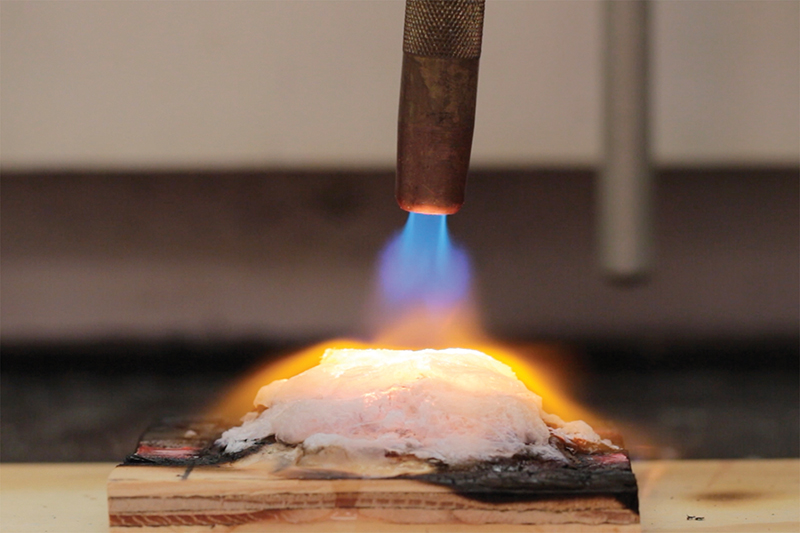
The gel transitions from a hydrogel to an aerogel under heat from a gas hand-torch. The torch burns much hotter than wildfires
© Andrea d’Aquino/Stanford UniversityThe water-enhancing gel could be sprayed onto homes and infrastructure to protect them.
Associate Professor Eric Appel notes that water-enhancing gels typically consist of super-absorbent polymers. When mixed with water and sprayed onto a building, they swell into a gelatinous substance that clings to the structure, creating a thick, wet shield.
However, as conditions near wildfires are extremely dry – with high temperatures, high winds and very low humidity – water in the gel can evaporate quickly.
In the new material, water is just the first layer of protection. It contains a mix of a cellulose-based polymer and silica particles, which get left behind when the gels are subjected to heat.
After all the water and cellulose burns off, the silica particles form a highly insulative foam. This scatters the heat, protecting the substrate underneath.
'We have discovered a unique phenomenon where a soft, squishy hydrogel seamlessly transitions into a robust aerogel shield under heat, offering enhanced and long-lasting wildfire protection,' says lead author Changxin “Lyla” Dong. The silica forms an aerogel typically used in space applications.
Appel adds, 'Traditional gels don’t work once they dry out. Our materials form this silica aerogel when exposed to fire that continues to protect the treated substrates after all the water has evaporated. These materials can be easily washed away once the fire is gone.'
The team tested several formulations by applying them to plywood and exposing them to a direct flame from a gas hand-torch, which burns considerably hotter than a wildfire. The most effective gel lasted for more than seven minutes before the board started charring.
Appel and Dong note that the materials should work fine with any structure. 'This class of materials…is only deployed when homes or other structures are directly in harm’s way. They are typically deployed within hours of the fire reaching.'
In 2019, Appel and colleagues used the same gels to hold wildland fire retardants on vegetation for months at a time to prevent ignition. Testing the gel independently, they observed a 'super cool outcome where the gels puffed up into an aerogel foam', reflects Appel.
It then took several years to make the gel stable in storage and easily sprayable with standard equipment, so it can adhere to different surfaces. They achieved this by altering the ratios and concentrations of the polymers and particles.
The team say the gels are made of non-toxic components that have been approved by the US Forest Service and have already studied how soil microbes break them down. 'They’re safe for both people and the environment,' Appel concludes.


